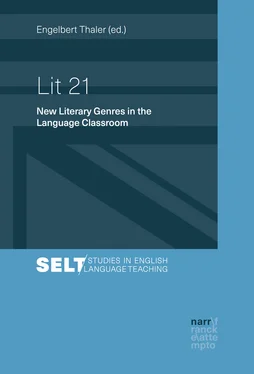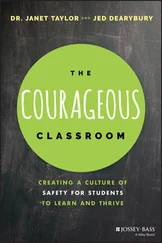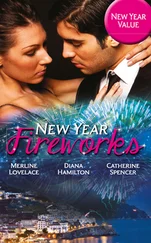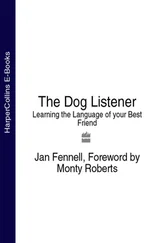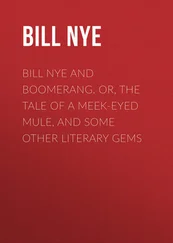Email novels: Heart on my Sleeve by Ellen Wittlinger (2004)
IM novels (instant messaging): Connect2God. Instant Messages from God to Teens by Andy Cloninger/Kurt Cloninger (2004)
Blog novels: Kiss & Blog by Alyson Noël (2007)
Twitterature (Twitter literature): TweetHeart: A Novel in E-mails, Blogs, and Tweets by Elizabeth Rudnick (2010)
Digi texts are written for and read from a computer, can be web- or app-based (for tablets and smartphones) or accessed via CD-ROMs, and would lose something of their structural form and aesthetic impact if they were removed from the digital medium, as they are “born digital” and not just e-books (Bell et al. 2014, Blake 2013, Dudeney et al. 2013, Hammond 2016, Jonneg 2017, Koskimaa 2016, Rustad 2014). Interactive Fiction contains hyperlinks, moving images, sound effects, mini-games and further gadgets, so the reader constructs the narrative him/herself by controlling a character’s journey through the narrative, changing the way the story unfolds at every major turn, unlocking what-if-storylines through embedded links, interacting with the author through a voting platform, re-reading key scenes from the perspective of different characters. So the 21st century readers no longer are the passive consumers, but the active producers ( prosumers ), which is in line with the concept of Web 2.0 or even Web 3.0. A creative outlet for writerly and technological types among them is Kinetic Poetry , which synthesizes moving multimedia art with poetic traditions by employing tools like Java, Flash or other animation programs to transform ideas into motion.
Examples: Inanimate Alice by Kate Pullinger/Chris Joseph ( https://inanimatealice.com, digital story including text as well as visual elements, sound and even short games, presenting different episodes with Alice, who lives in various parts of the world), Flight Paths by Kate Pullinger/Chris Joseph ( http://flightpaths.net, immigration story about young Pakistani airplane stowaway Yacub encountering London resident Harriet, written with contributions from readers, including sound effects, photography, video, music, graphics and written text)
Not much unlike any other period, crises abound in the 21 stcentury and trigger literary output (Horton 2014). Two of them loom large, one in the political field, the other in the financial-economic one.
9/11 fiction: The terrorist attack on the World Trade Center in New York on 11 September 2001 gave rise to several novels (Kovach 2016).Examples: The Reluctant Fundamentalist by Mohsin Hamid (2007), Falling Man by Don DeLillo (2007)
Crunch Lit: This type of “recession writings” is based on the financial crisis of 2008, contains lots of unsympathetic characters, is set around banking institutions, and satirizes modern life, consumer culture and the credit boom.Examples: Capitalism by John Lanchester (2011), A Week in December by Sebastian Faulks (2009), The Fear Index by Robert Harris (2011)
4.5 (Post-)Apocalyptic Fiction
If one may compare neo-dystopias (new anti-utopias) to classical dystopias (Voigts/Boller 2015, Matz 2015, Matz 2017), 21st century dystopias can rely on the increasing popularity of dystopian fiction and film, comprise more young-adult fiction catering for younger audiences, show the protagonists at least partially triumph over the oppressive regime, and frequently deal with themes like the destruction of individuality, the enslavement and silencing of citizens, environmental threats, and post-apocalyptic events, in which the civilization of the Earth is collapsing or has already collapsed. They present “a non-existent society […] that the author intended a contemporaneous reader to view as considerably worse than the society in which that reader lived” (Sargent 1994, in Booker 2013: 6). The growing number of dystopian books in young adult fiction like Susan Collins’ The Hunger Games (2008-2010), Scott Westerfield’s Uglies (2005) and Nobel Prize winner Kazuo Ishiguro’s Never Let Me Go (2005) promises to “reenergize the genre for new generations” (Booker 2013: 11) and sustain its aesthetical value. (Post-)Apocalyptic Fiction is usually centred around the following five types:
climatic apocalypse (CliFi, climate fiction), e.g. Solar by Ian McEwan (2010)
natural apocalypse (impact event etc.), e.g. Remnants by K. A. Applegate (2001–2003)
man-made apocalypse (nuclear holocaust, resource depletion etc.), e.g. The Road by Cormack McCarthy (2006)
medical apocalypse (plague, virus etc.), e.g. A Lovely Way to Burn by Louise Welsh (2014)
imaginative apocalypse (zombies, alien invasion etc.), e.g. The Walking Dead by Robert Kirkman (2003 ff.)
Integrating characters from diverse backgrounds, books are meant to become more truly representative of the fabric of life in this diverse world (Alvermann et al. 2013, Harris 1997, Martinez 1993, Moore-Kruse 1993, Oswald/Atkinson 2011). At least four forms of diversity have come to the fore in the literary market.
Ethnic, e.g. books about the Hindi Dalit , considered “untouchable” in India’s caste system, by Omprakash Valmiki, Chandrabhan Prasad, or Rajat Rani Meenu
Occupational, e.g. Cashier Memoirs , i.e. memoirs by cashiers and other overlooked service workers approaching life behind the register as both humorous and thankless, like Checkout Girl – A Life behind the Register by Anna Sam (2010)
Gender, e.g. Bitpunk , i.e. an amalgamation of “8-bit” and “punk” inspired by the sounds, textures and visuals of classic 8- and 16-bit videogames, like the screenplay for the film Spork by J.B. Ghuman Jr. (2010)
Age, e.g. Gran-Lit , i.e. grandparents’ literature trying to prove that romance and passion are not the privilege of just the young, like Thursdays in the Park by Hilary Boyd (2011)
At the beginning of the new century, Paul Jay called for the study of “literature’s relations to the processes of globalization” (Jay 2001: 35). Globality having become the new mega paradigm, researchers explore Fictions of Globalization (Annesley 2006), Transcultural Imaginaries (Tunkel 2012), and the Cosmopolitan Novel (Schoene 2009).
Example: Mister Pip by Lloyd Jones (2006), a politically informed, cross-cultural adaptation of Charles Dickens’s Great Expectations (1860), and an autodiegetic coming-of-age narration, in which Great Expectations is read, retrieved and recreated at least six times and in different ways (Nowak 2017)
This residual category not only results from being at a loss to find a common term for other types, but also reflects the diversity of today’s literary world.
Mythopoeia Greek for mythos-making, mythopoeia refers to a narrative genre where a fictional mythology is created by the author. Sometimes it comes as a series of epic fantasy novels.Example: A Song of Ice and Fire by George Martin (2011), turned into TV drama Game of Thrones
FanficShort for fanfiction, Fanfic is prose or poetry written by fans of a film, TV show or book featuring the person’s favourite characters. The products are posted online or published in a “fanzine” enabling a wide audience to share and discuss stories on the web. Typical characteristics of fanfic are its non-commercial use, intermediality, intertextuality, hypertextuality, and the transformation of the original.Example: the multitude of stories around Harry Potter
Читать дальше
